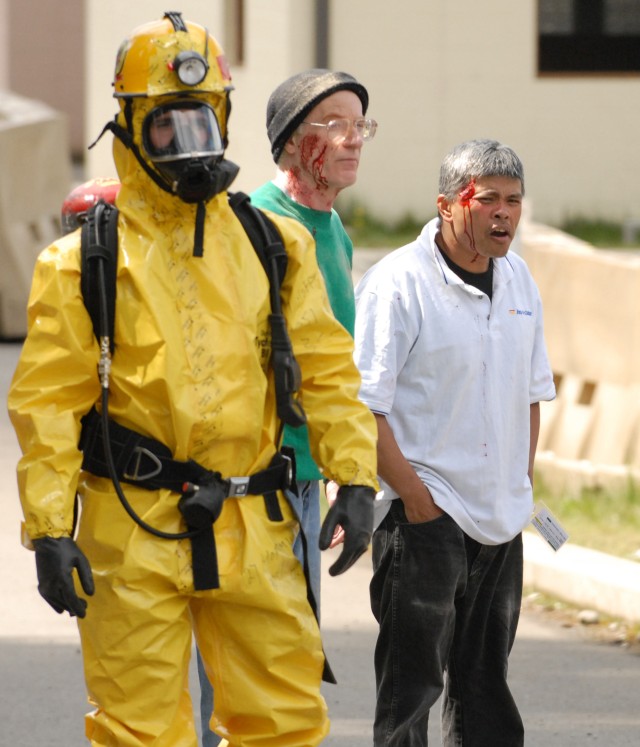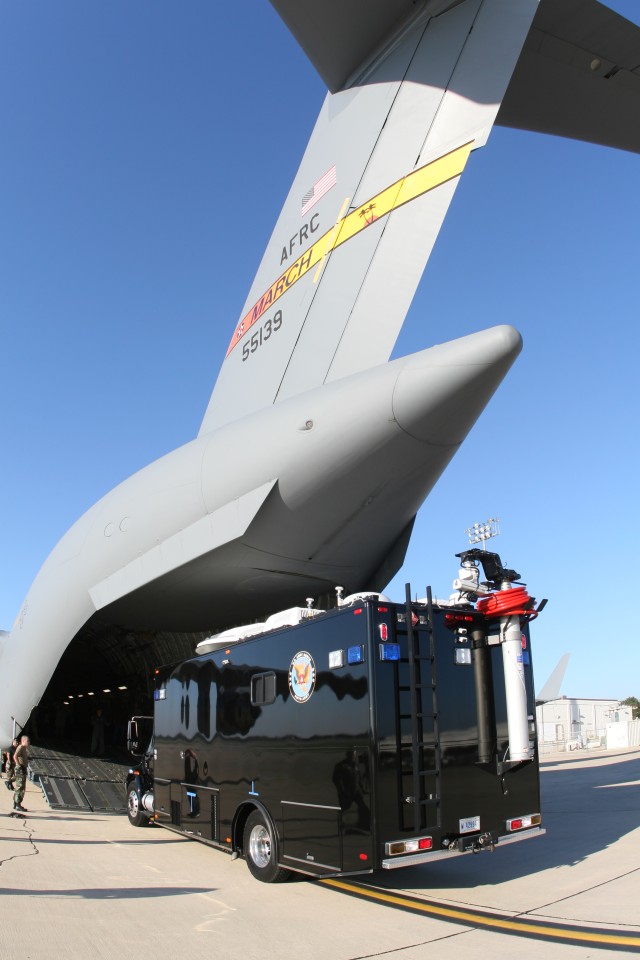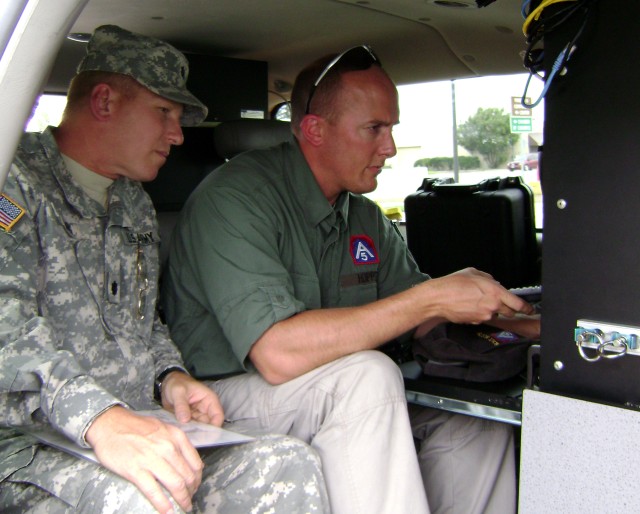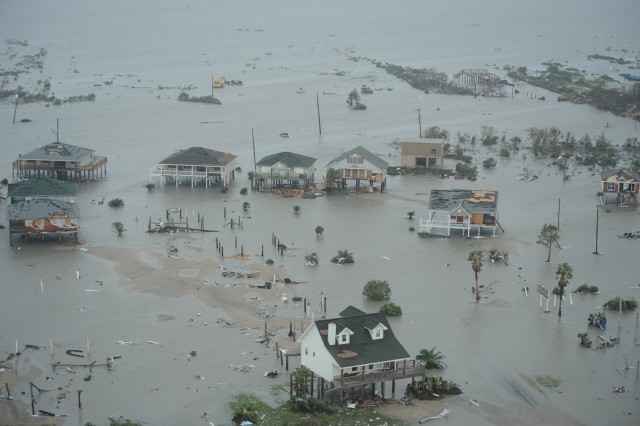In 2008 U. S. Army North was dealt its fair share of curve balls: from wildfires burning in California to back-to-back hurricanes targeting the southern United States and standing up a consequence management response force the command knocked each and every one out of the park.
"This past year was one of transition and I believe the people of ARNORTH and our subordinate units met every challenge with great results." said Lt. Gen. Thomas R. Turner II, commanding general, ARNORTH.
During, ARNORTH personnel deployed to Washington State in May for National Level Exercise 02-08, a coordinated response to a simulated terrorist attack in the Pacific Northwest.
It wasn't long after that "real-world" events took the field. In June, thousands of lightning strikes and record dry conditions in Northern California sparked more than 2,500 wildfires burning thousands of acres across the state.
The fires triggered the deployment of military personnel to provide support to the State of California and wild land fire fighting efforts. Federal Emergency Management Agency Region X Defense Coordination Officer, Col. Gary Stanley, and his Defense Coordinating Element, augmented by several ARNORTH experts, supported the National Interagency Fire Center, in Boise, Idaho.
"Less than a week after being activated, we had coordinated a request for our first four military helicopters with water buckets to fight the fires," Stanley said. "Within ten days, six Marine Corps and two Navy helicopters had made nearly 500 drops totaling more than 160,000 gallons of water."
While the fires were burning on the west coast, a storm was brewing in the Atlantic Ocean. In July, Hurricane Dolly moved onto the radar screen prompting Army North to deploy its region VI DCE.
The Category 2 hurricane hit the southern tip of Texas just north of Brownsville July 23, causing isolated flooding and leaving thousands of people without power.
The DCE, led by Col. Laverm "Bullet" Young, was prepared to coordinate a wide range of support capabilities, including search and rescue, evacuation, transportation, medical and others.
Shortly after Dolly struck, the threat of Hurricane Gustav striking Louisiana with the same intensity as Hurricane Katrina did in 2004 prompted the state and federal government to evacuate nearly two million people out of New Orleans and the Louisiana coast line and DCE region VI deployed again to Baton Rouge, LA.
Operational Command Post 2 followed by deploying to Alexandria, La., before Hurricane Gustav, marking the first time an OCP had deployed before the landfall of a hurricane.
The region VI DCE redeployed to Texas and OCP2 deployed again shortly after returning from Hurricane Gustav to support relief efforts before and after the landfall of Hurricane Ike.
"Because of our rigorous training program, our DCEs, OCPs, and (Main Command Post) remained ready to assist the American people," said ARNORTH Command Sgt. Maj. George Nieves.
During the midst of these various natural disasters the command also support the U. S. Secret Service in providing assets to support both the Democratic and Republican National Conventions.
In September, more than 800 service members and civilians took part in exercise Vibrant Response. The exercise integrated Army North's subordinate Joint Task Force Civil Support as the task force headquarters to command the CBRNE Consequence Management Response Force.
The exercise garnered the attention of America's top Soldier as Army Chief of Staff Gen. George Casey watched, listened and asked questions as Soldiers, Sailors, Airmen and Marines walked through how they might fly search and rescue missions, extract casualties and decontaminate those affected by a catastrophic nuclear attack in the nation's heartland.
Exercsie Vigilant Shield closed the year as a simulated 7.8 magnitude earthquake that struck California killing and injuring thousands of people, leaving millions without power and breaking the southern portion of the state's infrastructure.
"What I'm most impressed with is that through everything this past year, we built strong relationships with Department of Homeland Security (DHS), FEMA, and the National Guard Leadership of many of the states "It is critical that these relationships continue since these are the people at the tip of the spear during times of natural or man made disasters to whom we provide support if required," Turner said.
"Our goal has been and always will be to take this command from good to great. What that means to me is that we can never be complacent in our planning and preparation for each and every mission we may be handed," Turner continued.








Social Sharing